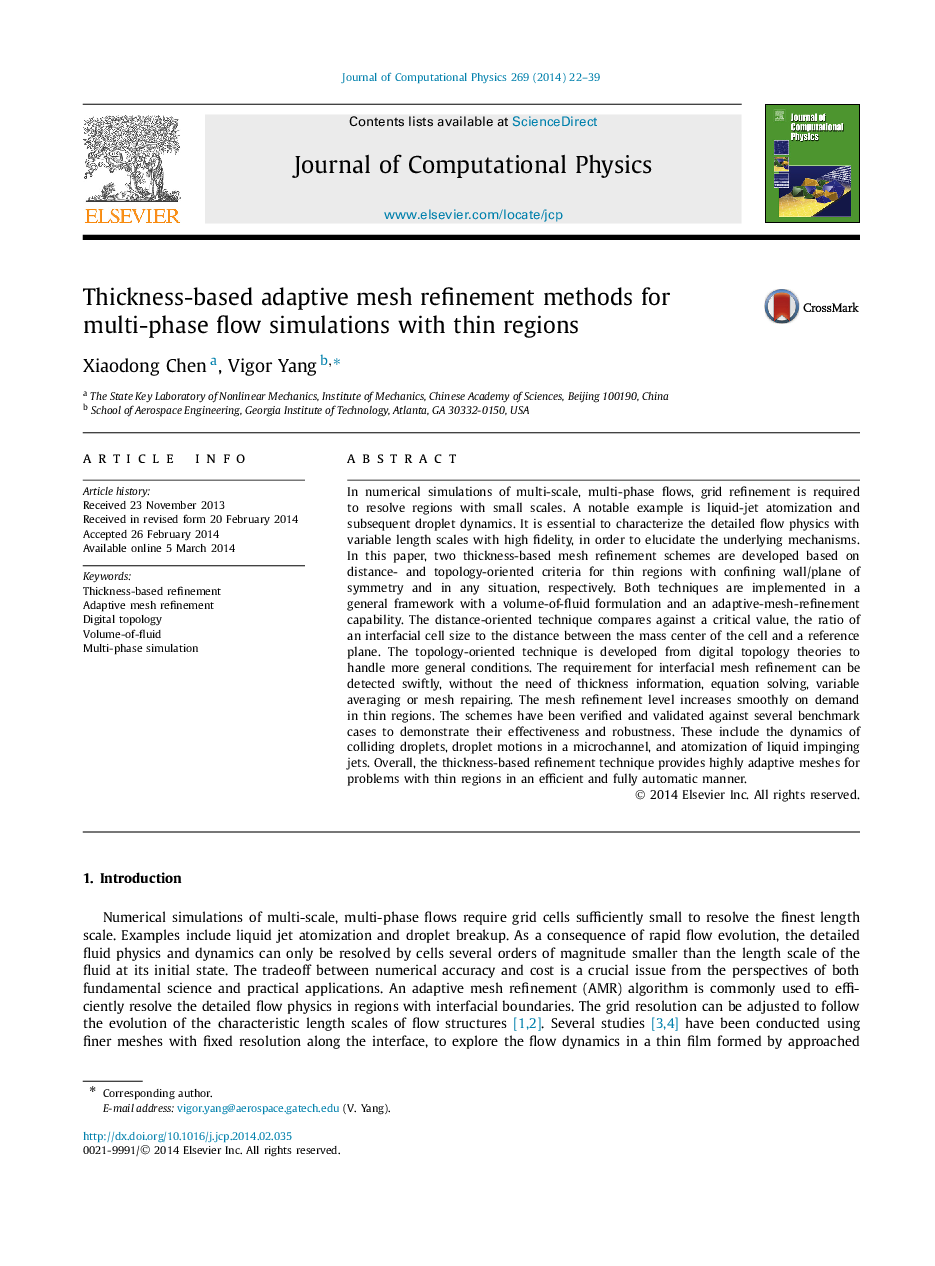| Article ID | Journal | Published Year | Pages | File Type |
|---|---|---|---|---|
| 520143 | Journal of Computational Physics | 2014 | 18 Pages |
In numerical simulations of multi-scale, multi-phase flows, grid refinement is required to resolve regions with small scales. A notable example is liquid-jet atomization and subsequent droplet dynamics. It is essential to characterize the detailed flow physics with variable length scales with high fidelity, in order to elucidate the underlying mechanisms. In this paper, two thickness-based mesh refinement schemes are developed based on distance- and topology-oriented criteria for thin regions with confining wall/plane of symmetry and in any situation, respectively. Both techniques are implemented in a general framework with a volume-of-fluid formulation and an adaptive-mesh-refinement capability. The distance-oriented technique compares against a critical value, the ratio of an interfacial cell size to the distance between the mass center of the cell and a reference plane. The topology-oriented technique is developed from digital topology theories to handle more general conditions. The requirement for interfacial mesh refinement can be detected swiftly, without the need of thickness information, equation solving, variable averaging or mesh repairing. The mesh refinement level increases smoothly on demand in thin regions. The schemes have been verified and validated against several benchmark cases to demonstrate their effectiveness and robustness. These include the dynamics of colliding droplets, droplet motions in a microchannel, and atomization of liquid impinging jets. Overall, the thickness-based refinement technique provides highly adaptive meshes for problems with thin regions in an efficient and fully automatic manner.
